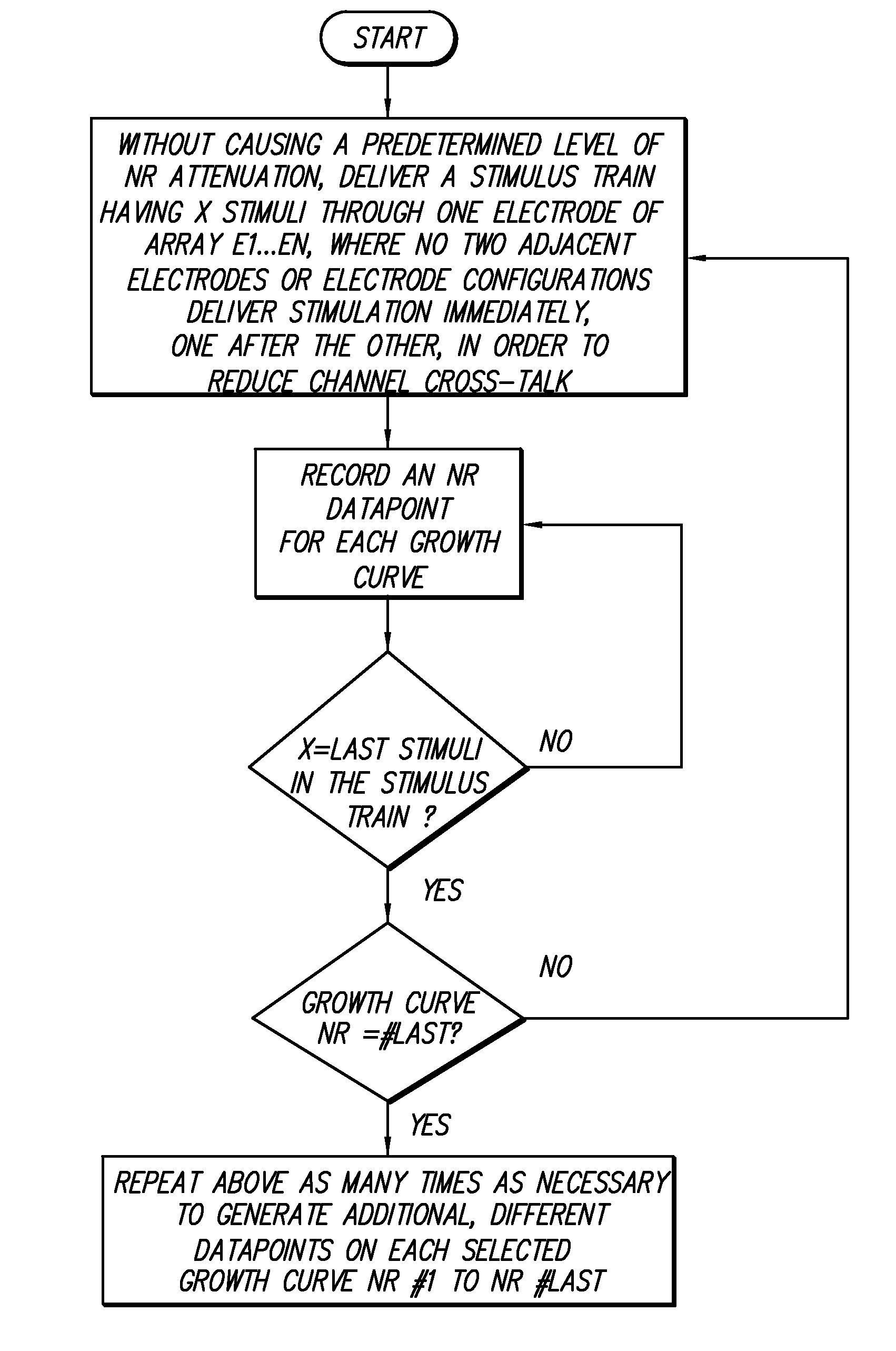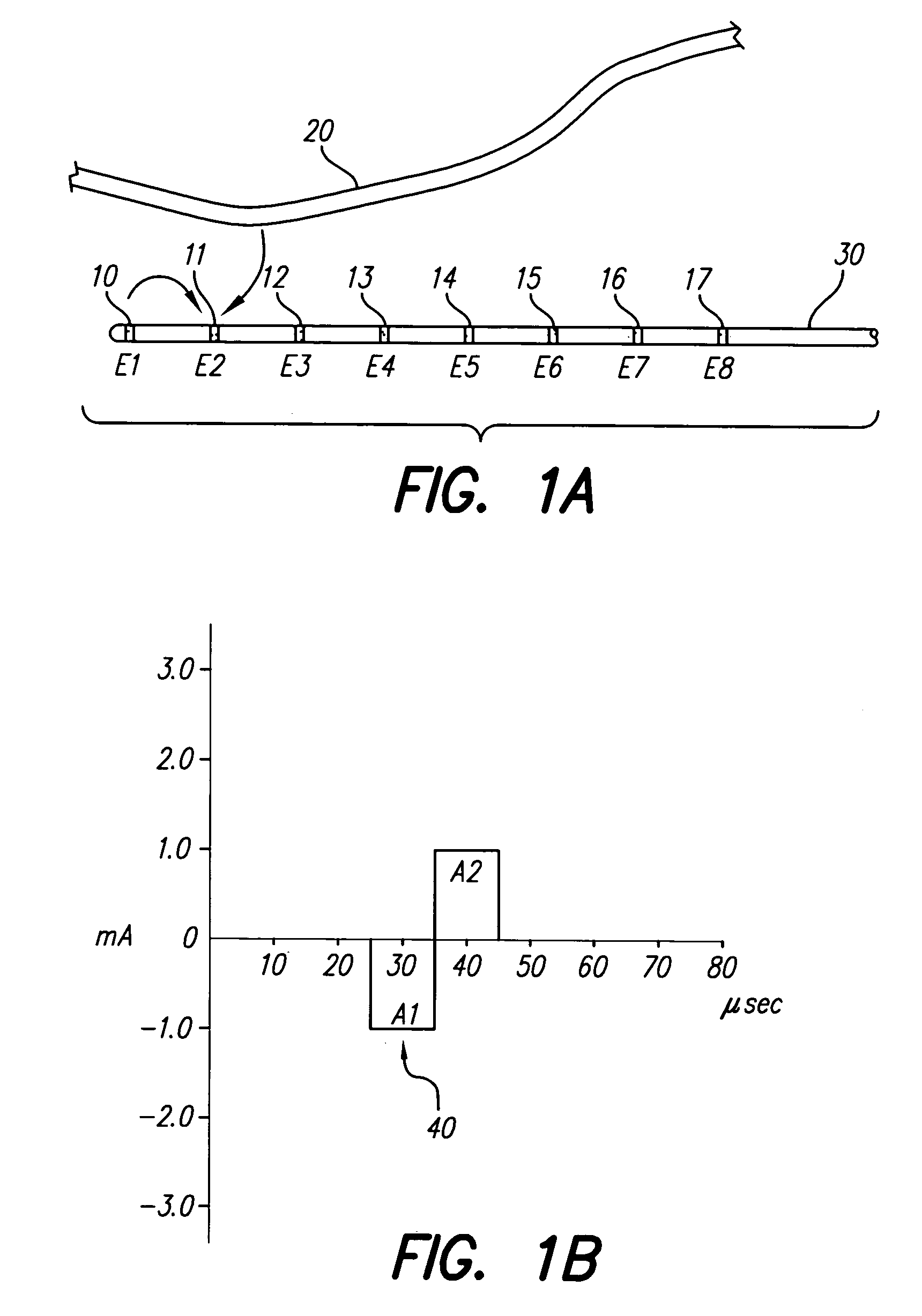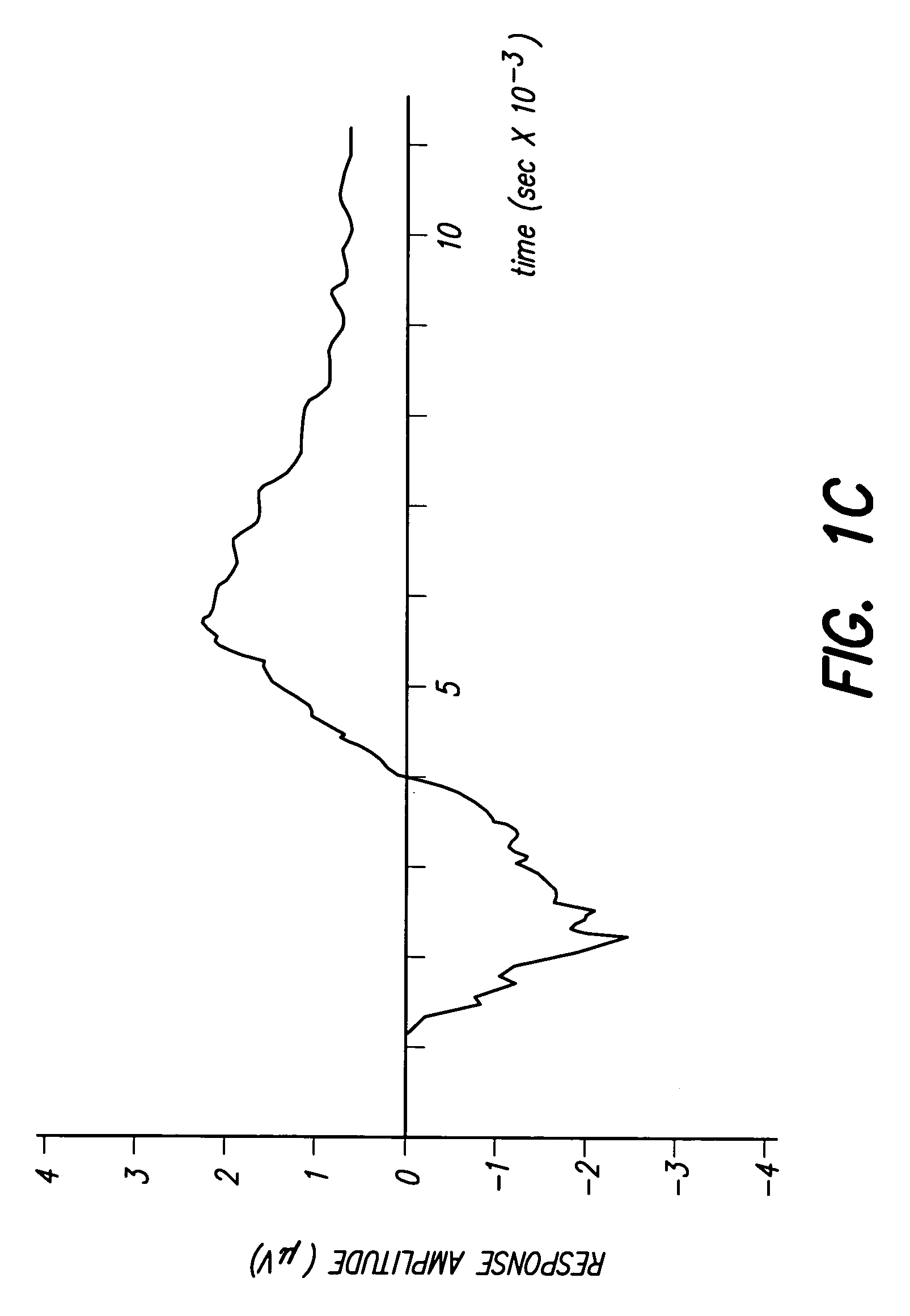Method of rapid neural response measurement without amplitude attenuation
a neural response and amplitude attenuation technology, applied in the field of rapid neural response measurement without amplitude attenuation, can solve the problems of inability to accurately record the entire recording session, and inability to achieve the full effect of recording, reducing the total time, and improving accuracy
- Summary
- Abstract
- Description
- Claims
- Application Information
AI Technical Summary
Benefits of technology
Problems solved by technology
Method used
Image
Examples
example 1
[0053]In a case with four NR curves, in a first recording pass, one datapoint can be recorded from each growth curve. A possible recording sequence is: Datapoint #3 in NR #1 (X=15), Datapoint #1 in NR #2 (X=10), Datapoint #10 in NR #3 (X=12) and Datapoint #3 in NR#4 (X=7). This can continue with Datapoint #12 in NR #1 (X=1), Datapoint #3 in NR #2 (X=20), Datapoint #5 in NR #3 (X=25) and Datapoint #7 in NR#4 (X=9). This recording process can continue until all desired datapoints are collected for each growth curve and an averaged datapoint can be calculated for each datapoint obtained a multiple (variable X) number of times.
[0054]In order to obtain different datapoints on a single growth curve, the stimulus magnitude can be varied and the NR recorded. The stimulus magnitude may be varied by varying the current amplitude, while holding the stimulus pulsewidth constant. Another alternative is to hold the amplitude constant while varying the pulsewidth. Or still yet, both parameters may...
example 2
[0057]As an example of a recording sequence which does not stimulate adjacent electrodes or electrode configurations, in an eight electrode system, as shown in FIG. 1A, a possible stimulation sequence might be: E1 (X1 times), E4 (X2 times), E7 (X3 times), E5 (X4 times), E2 (X5 times), E8 (X6 times), and E3 (X7 times) and E6 (X8 times), where X1, X2 . . . X8 represent different whole numbers 1 or greater. Preferably X1, X2 . . . X8 (which represent variable values of X) is a whole number 1 to 500, and more preferably a whole number 1 to about 50. The variable X's are dependent on a particular stimulus applied, the electrode delivering the stimulus, and the predetermined level of attenuation that can act as a trigger to end stimulation. Repeating this same sequence with different applied stimulus amplitudes results in additional datapoints, one for each growth curve, NR #1 through NR #8. This recording process can be repeated until each growth curve has enough datapoints to allow suff...
example 3
[0059]FIG. 3 provides alphabetic labels for each datapoint for four separate electrode configurations, represented by growth curves NR #1, NR #2, NR #3 and NR #4. Each growth curve has four datapoints, from which each respective growth curve can be fitted. X, which is the whole number 1 or greater, represents the number of times an identical stimulus can be applied to obtain one datapoint before unwanted NR attenuation occurs. In a first pass, a datapoint in NR #1 is recorded X1 successive number of times. Then a datapoint in NR#2 is recorded X2 successive number of times, a datapoint in NR #3 is recorded X3 successive number of times and a datapoint in NR #4 is recorded X4 number times, where X1, X2, X3 and X4 represent the specific variable values of X's (whole numbers 1 or greater) for each datapoint.
[0060]One possible sequence for obtaining all the data points for NR #1, NR #2, NR #3 and NR #4 (shown in FIG. 3) is L, A, N, G, wait, K, D, P, E, wait, I, C, M, H, wait, J, B, O, F....
PUM
 Login to View More
Login to View More Abstract
Description
Claims
Application Information
 Login to View More
Login to View More - R&D
- Intellectual Property
- Life Sciences
- Materials
- Tech Scout
- Unparalleled Data Quality
- Higher Quality Content
- 60% Fewer Hallucinations
Browse by: Latest US Patents, China's latest patents, Technical Efficacy Thesaurus, Application Domain, Technology Topic, Popular Technical Reports.
© 2025 PatSnap. All rights reserved.Legal|Privacy policy|Modern Slavery Act Transparency Statement|Sitemap|About US| Contact US: help@patsnap.com



